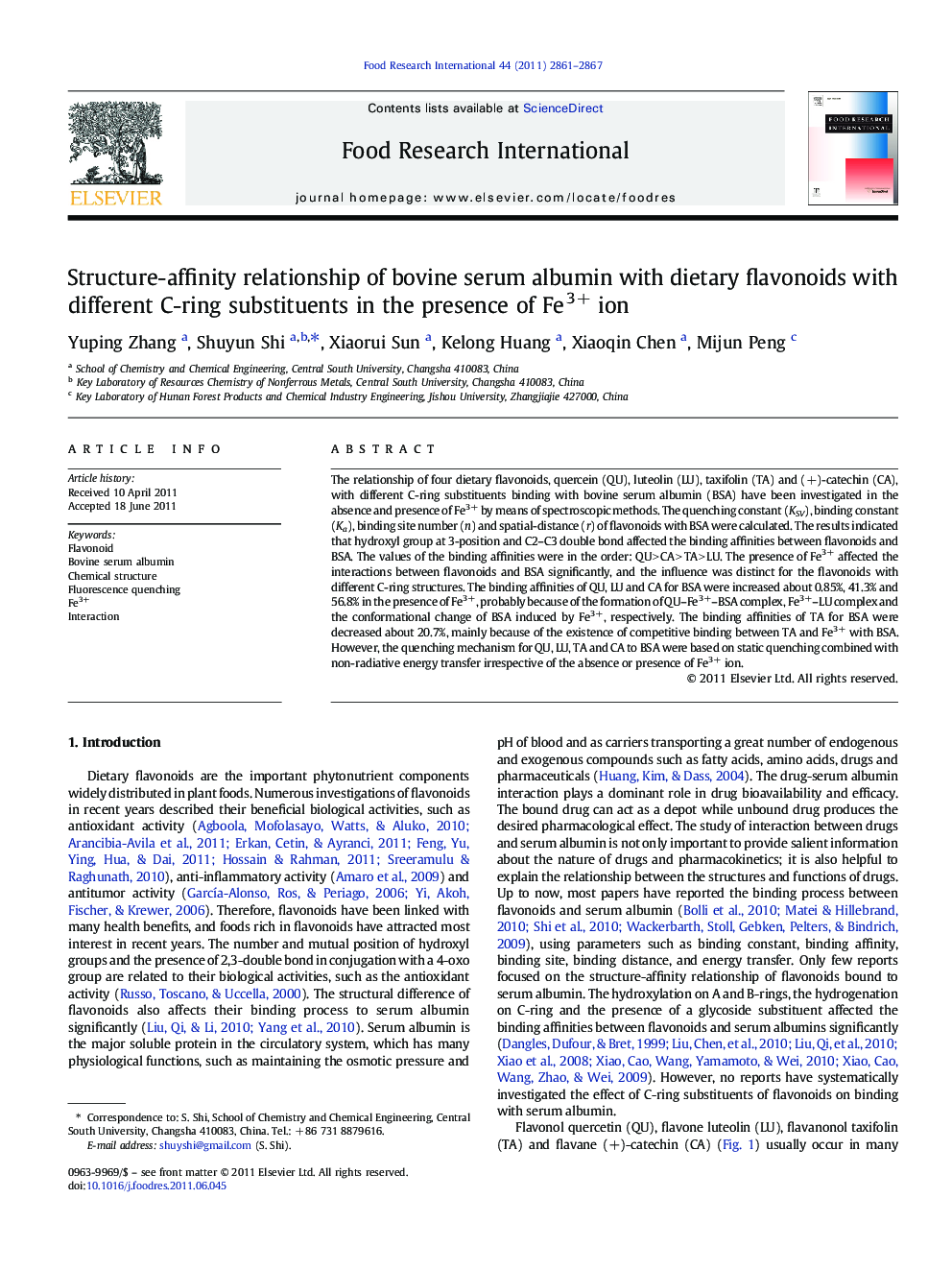| Article ID | Journal | Published Year | Pages | File Type |
|---|---|---|---|---|
| 4562111 | Food Research International | 2011 | 7 Pages |
The relationship of four dietary flavonoids, quercein (QU), luteolin (LU), taxifolin (TA) and (+)-catechin (CA), with different C-ring substituents binding with bovine serum albumin (BSA) have been investigated in the absence and presence of Fe3+ by means of spectroscopic methods. The quenching constant (KSV), binding constant (Ka), binding site number (n) and spatial-distance (r) of flavonoids with BSA were calculated. The results indicated that hydroxyl group at 3-position and C2–C3 double bond affected the binding affinities between flavonoids and BSA. The values of the binding affinities were in the order: QU > CA > TA > LU. The presence of Fe3+ affected the interactions between flavonoids and BSA significantly, and the influence was distinct for the flavonoids with different C-ring structures. The binding affinities of QU, LU and CA for BSA were increased about 0.85%, 41.3% and 56.8% in the presence of Fe3+, probably because of the formation of QU–Fe3+–BSA complex, Fe3+–LU complex and the conformational change of BSA induced by Fe3+, respectively. The binding affinities of TA for BSA were decreased about 20.7%, mainly because of the existence of competitive binding between TA and Fe3+ with BSA. However, the quenching mechanism for QU, LU, TA and CA to BSA were based on static quenching combined with non-radiative energy transfer irrespective of the absence or presence of Fe3+ ion.
► Effect of Fe3+ on different C-ring flavonoids binding with BSA has been studied. ► The presence of Fe3+ increased binding affinities of QU, LU and CA to BSA. ► The presence of Fe3+ decreased binding affinity of TA to BSA. ► Competitive binding or conformational change of BSA changed the binding affinities.
